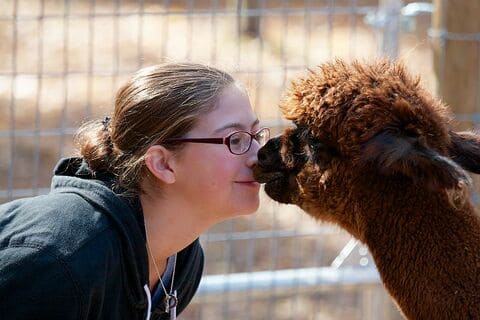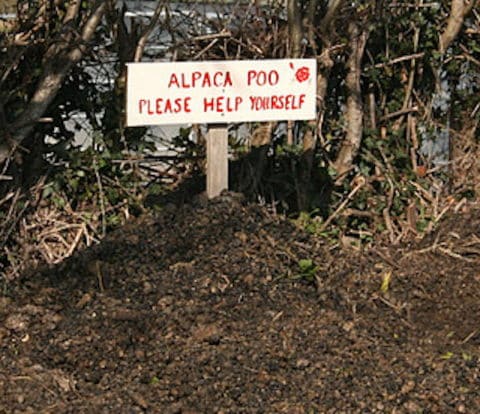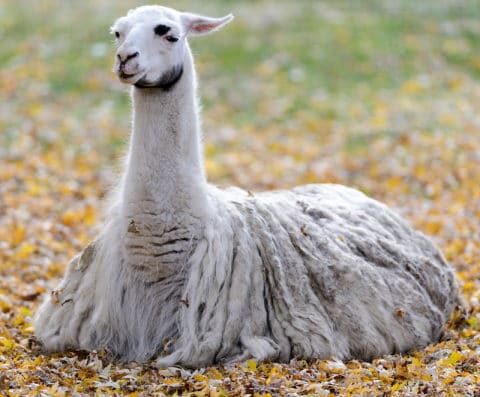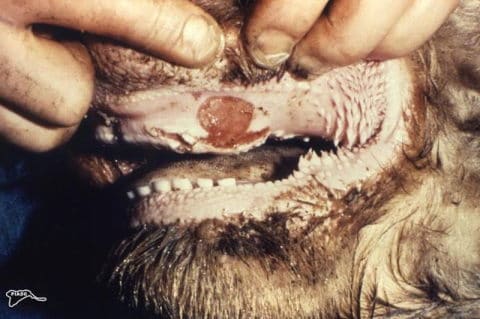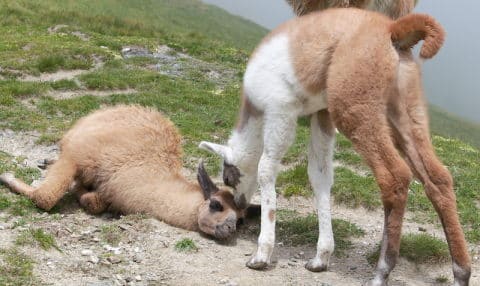For my own personal use only:
- Spitting
- South American camelids (SACs) spit to assert dominance
- Sputum consists of partially fermented food from C1 and is foul-smelling
- Able to spit up to 10 ft away
- Spitting is usually preceded by the animal laying its ears back
- Pregnant females will spit on intact males (quick and dirty pregnancy test)
- Elliptical
erythrocytes
- Erythrocytes are small and elliptical, +/- fusiform, +/- spindle-shaped
- There is no central pallor
- Folding of cells may occur
- Because of their size and shape, automated cell counters may not produce reliable results
- Normal packed cell volume (PCV) is 27-45% and normal erythrocyte counts are 10.1-17.3 x 106/μL
- Click here to see images of SAC blood smears
- Orgling
- Characteristic guttural vocalization of male SACs during mating
- Helps to induce ovulation in females
- Click here to see (and hear) a video of a male alpaca orgling
- Other SAC sounds are humming, clucking, and alarm calls
- Communal dung
pile
- SACs defecate in a designated pile
- Animals will wait in line to use the pile
- SACs are rarely messy during travel and in their stalls
- SAC dung ("llama beans") is nutrient-rich fertilizer and does not burn plants
- SACs also urinate in the same spot
- The dung pile is nearly odorless
- Three-compartment
stomach
- C1:
- 85% of stomach
- Similar to rumen
- Ventricular groove: In neonates directs milk past C1 and C2, delivering to C3
- C2:
- 6% of stomach
- Similar to reticulum
- C3:
- 9% of stomach
- Similar to abomasum
- Five anatomic divisions:
- First 4/5 have mucosal glands
- Distal 1/5 has true gastric and pyloric glands (this is where the majority of gastric ulcers occur)
- C1:
- Berserk male
syndrome
- Occurs in males that were bottle-fed as crias or isolated from herd and have imprinted on the human caregiver
- Characterised by aggressive behavior toward humans
- Kush
- Sternal recumbency with legs under body
- A common way for SACs to rest
- Females assume this position for breeding
- Most SACs will kush when you grab their tail
- SAC diseases also seen in
other animals
- Foot and mouth disease (FMD):
- Clinical signs are generally mild in SACs
- SACs can be infected, but are not very susceptible
- SACs do not become carriers and cannot transmit to other animals
- Rabies:
- Any neurologic signs: Agitation, aggression, hypersalivation, roaming, separation from herd, ascending paralysis, colic, depression, light sensitivity, markedly increased sexual activity
- ZOONOTIC and 100% fatal
- Especially a concern in SACs because of spitting
- Vaccination is recommended, however, no rabies vaccine is licensed for use in SACs
- Parelaphostrongylus
tenuis
:
- Clinical signs:
- Lumbar weakness, ataxia
- Paralysis
- Scoliosis
- Prevention:
- Deer-proof fencing
- Anthelmintics every 30-45 d from spring to fall
- Clean, dry environment to prevent snails and slugs
- Also known as meningeal worm of white-tailed deer
- Clinical signs:
- Bovine viral diarrhea:
- Fever, oral ulceration, diarrhea, abortion
- Vaccination in SACs currently is not recommended as it can interfere with testing
- PCR is test of choice
- Foot and mouth disease (FMD):
Images courtesy of Eva Rinaldi (alpaca at top), Luc Viatour (down llama), Maurice Pullin (alpaca poo), CDC (FMD), Eric Kilby (kushing), Henryhbk (girl and alpaca), Trish Steel (alapaca in table), and mtchm from (llamas and alpacas at foot of volcano) .
Top Topic Category
Exotics
